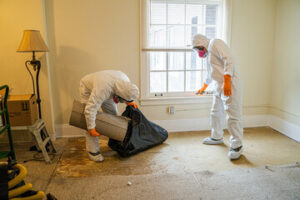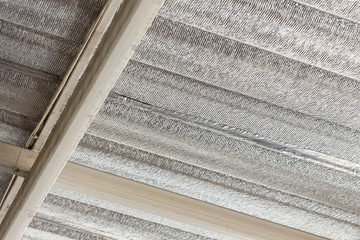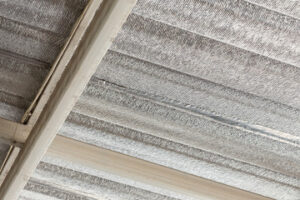If your home has suffered water damage, you will need professional help to clean and sanitize the affected areas. Look for IICRC-certified experts and a company that complies with OSHA standards.
Experts at Water Damage Restoration Oklahoma City has industrial-strength equipment that can effectively dry and clean wet materials. They also have the right tools to safely handle hazardous materials.
If you experience a water damage emergency, it’s important to call a professional immediately. This will prevent the problem from worsening and save you thousands of dollars in potential damages. In addition, it will also help prevent health risks like bacterial growth and mold.
Before you can start restoring your home or business, it’s important to find the source of the water damage. This will help you decide which type of restoration process is best for your situation. A comprehensive assessment will also help you file insurance claims and schedule repairs.
The most common causes of water damage include:
Exterior floods from overflowing gutters, flooded basements, and clogged drains. Interior problems such as a burst pipe, backed-up sewer lines, or a failing water heater.
IICRC certified experts know how to identify the source of your water damage. They will use high-quality moisture meters to assess the level of moisture in your home. They will then use the appropriate tools to remove the moisture and restore your home.
If you are not sure which type of water damage you have, it’s important to contact a IICRC expert immediately. They will assess your home or business and determine the extent of the damage. They will then provide you with an estimate for the cost of repairs and restoration.
A comprehensive assessment is a valuable tool for homeowners, property owners, and insurance companies. It can help you identify the type of water damage, determine its severity, and determine if additional repairs are needed. A professional IICRC restoration company will conduct a thorough inspection of your home or business, taking into account the cause and extent of the damage.
Whether your water damage is due to flooding, a broken sink or appliance, or a malfunctioning hot water heater, it’s important to contact a certified IICRC expert immediately. An IICRC-certified company will follow industry best practices and keep up with the latest technology. They will be able to assess and treat your water damage quickly and effectively, saving you money in the long run. They will also be able to repair your home or business to its original condition.
IICRC Certified Experts
Water damage can be caused by a variety of factors, from a burst pipe to a flood. No matter the cause, it’s important to act quickly to avoid additional issues like mold growth. Hiring IICRC Certified Experts can help you clean up the mess and restore your property to its normal state.
The IICRC is a globally recognized certification and standard-setting organization in the inspection, cleaning, and restoration industries. Their certification programs teach professionals best practices and technical expertise in their areas of specialization, helping them deliver high-quality services to customers. The IICRC offers a variety of courses, including the Water Restoration Technician (WRT) course, which provides students with the knowledge and skills needed to restore properties affected by water damage. This course can be taken online, including the exam, or in a classroom setting. The IICRC also offers the Applied Structural Drying (ASD) course, which builds upon the WRT class to focus on the drying process for structures and contents.
When water gets into your home, it can damage surfaces and substructures like drywall, plaster, wood, and carpeting. It can also lead to mold, rot, and other problems. Unless the problem is addressed quickly, it can cause significant structural damage and even loss of property. This is why you should always hire IICRC certified experts to handle any water damage repair.
Professionals with IICRC training can conduct an extensive examination to find the source of the water and determine the extent of the damage. They can then use specialized equipment to extract the water and dry out the area as quickly as possible. This may include commercial-grade air movers and dehumidifiers, as well as power washers to remove any debris and dirt from the surface.
Once the water is removed, the specialists can start working on restoring the structure to its pre-loss condition. This can involve replacing drywall, carpeting, and other materials, as well as sanitizing and disinfecting the area. In addition, they can also install air filtration systems and use antimicrobials to prevent mold growth. The restoration process can be lengthy, but it’s essential to complete it quickly to avoid further damage or health risks.
Clean Up
The cleanup stage of water damage restoration follows the mitigation phase. This step involves removing items that are too damaged to be saved, including furniture, personal belongings and other materials like carpeting and rugs. The restoration company may also remove drywall and other structures to facilitate drying. This is essential to prevent hidden mold growth, which can cause a wide range of health issues including respiratory distress and allergies. It’s important to note that this process can take a significant amount of time, depending on how much water was present and how long the affected materials were wet.
Once the area has been cleared of any hazardous materials, professionals can begin extracting moisture using air movers and dehumidifiers. During this stage, restoration experts monitor moisture levels to ensure the affected areas are dry before moving on to the cleaning process. They will use a variety of techniques to clean and sanitize the home, including foam, immersion, and abrasive cleaning methods.
After assessing the extent of the damage, the restoration expert will create two piles: one for items that can be saved and one for things that must be thrown away. Paper products, food, and electronics will most likely need to be thrown away, as well as anything made of porous materials such as drywall or wood floors. Those items that can be saved will need to be thoroughly cleaned and sanitized, which will involve a lot of scrubbing, soaking and vacuuming.
Before starting to clean up after a plumbing leak, it’s important to shut off the electricity at your breaker box. This will prevent electrical shorts and fires, which are common when dealing with wet materials. It’s also important to protect yourself by wearing rubber gloves, boots and a dust mask. The contaminated gray water from plumbing leaks can contain bacteria, viruses and other harmful germs, which can pose a serious threat to your health.
Water damage restoration is a complex task that requires the help of an experienced and professional restoration company. To ensure that your home is restored quickly and correctly, hire a company that employs IICRC certified experts. IICRC certification ensures that the technicians are trained in the latest industry standards and have the skills to effectively restore your property.
Dry Out
It’s important to dry out the affected area quickly to prevent mold and mildew. This may require removing carpeting, house rugs and furniture from the area. Items like this can act as a breeding ground for bacteria, viruses and fungi that put your family’s health at risk. To speed up the process, you can open windows and doors as much as possible to promote air circulation. It’s also a good idea to run fans and dehumidifiers to remove moisture from the air.
The amount of water damage will determine how long it takes to dry out the space. Some materials such as drywall and carpets can take up to 72 hours or more to completely dry out. It’s essential to follow specific protocols when drying these and other materials in your home.
A professional restoration company will have the specialized equipment needed to effectively dry out your home or business. They’ll start the process by assessing the damage and finding the source of the water. Once they’ve removed all the excess water, they can begin the process of cleaning and sanitizing. The company will then dry the space using air movers and dehumidifiers. They’ll also use specialized moisture meters to ensure the space is properly dried out.
If you’re experiencing water damage to your property, it’s best to contact a professional immediately. This will help to minimize the amount of damage caused and reduce future problems. They can clean, repair and restore your belongings as well as provide you with peace of mind.
There are a number of things you can do yourself to help the restoration process along, but it’s always best to hire a professional water restoration contractor for serious cases. If you can, it’s a good idea to turn off the power in the affected area. This will prevent electrical issues that can cause additional problems and safety hazards. In addition to this, it’s essential to shut off any appliances or equipment that are plugged in and could potentially experience an electric shock. You should also make sure to remove any debris from the water damaged areas as soon as possible.





 Residential paving can be expensive, depending on the type of material used and the labor costs involved. The price of the material can vary by region, too. For example, asphalt is less expensive than concrete in some areas, and sand or gravel can be cheaper in others. The size and location of the driveway are also important factors to consider when calculating the total cost.
Residential paving can be expensive, depending on the type of material used and the labor costs involved. The price of the material can vary by region, too. For example, asphalt is less expensive than concrete in some areas, and sand or gravel can be cheaper in others. The size and location of the driveway are also important factors to consider when calculating the total cost.